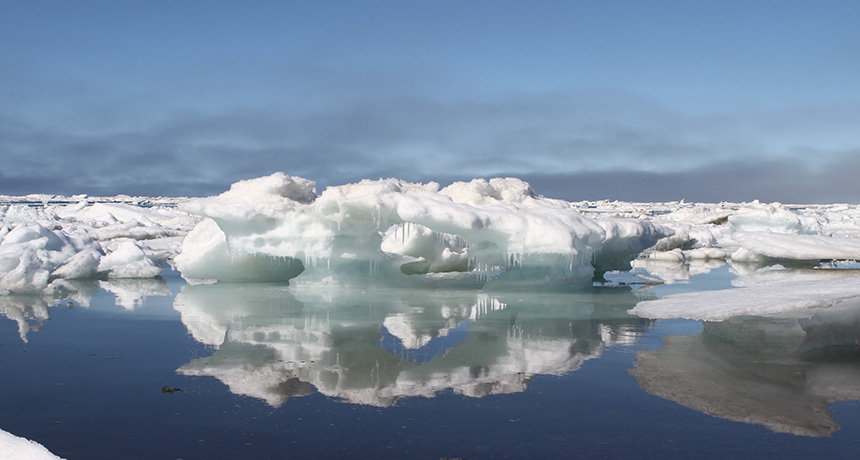
GOING, GOING… Warmer conditions in the Arctic are melting sea ice (as seen here near Barrow, Alaska). Now is the time to develop ways to save the ice, a scientist argues.
Kate Ramsayer/NASA
Leave it to a researcher who studies icy moons in the outer solar system to come up with an out-there scheme to restore vanishing sea ice in the Arctic.